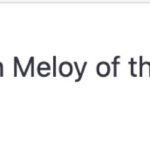We were listening to baby radio with our little one recently when “The Circle of Life” song from The Lion King played. It brought back memories of the movie and its powerful messages, especially Mufasa’s lesson to young Simba about their world. “Everything exists together in a delicate balance,” Mufasa explains, “we are all connected in the great circle of life.” These words, initially meant for a cartoon lion cub, resonate deeply, particularly when observing life on a farm.
Spring on the farm is a vivid reminder of this circle of life. It’s a season of vibrant growth and renewal. The pastures transform from dull brown to lush green, growing visibly longer each day. Our cattle bask in the warming sun, content with full bellies as they shed their winter coats. We plant seeds, trusting in the natural process of growth and the promise of future harvests. This year, we’re particularly excited to see how we’re further integrating into the circle of life on our farm by introducing pigs and chickens into our pasture rotation.
But how do pigs and chickens actually fit into this “circle of life,” especially in relation to our existing cattle and pastures? Let’s look at the interconnectedness, starting with the pasture and our cattle. We’ve intentionally planted diverse grasses in our pastures. This variety is crucial because different grasses offer different vitamins and nutrients to the cattle. A monoculture diet, like only clover, would be too rich and cause digestive upset. By providing a mix, we ensure they receive a balanced and healthy diet from the land.
As the cattle graze, they naturally fertilize the pasture with their manure. This manure returns vital nutrients to the soil, enriching it and promoting even better grass growth. This is nature’s way of recycling and nourishing the land. Furthermore, the roots of these diverse grasses play a critical role. Each type of grass has roots that reach different depths in the soil. Deeper roots enhance soil health by improving water absorption and nutrient penetration, creating a more resilient and fertile environment.
Following the cattle in our pasture rotation are the chickens. They also contribute to the pasture ecosystem. Chickens consume some of the grasses, supplementing their diet while further managing the pasture vegetation. Critically, their manure also acts as a natural fertilizer, adding another layer of enrichment to the soil. Embracing natural farming practices is central to our farm’s mission, and the chickens are integral to this.
The chickens actively scratch and till the pasture surface as they forage. This action helps to distribute the natural fertilizer more evenly, maximizing its beneficial impact. They also play a valuable role in pest control. Chickens are voracious insectivores, and they eagerly devour bugs in the pasture. This is a huge benefit to the cattle, reducing the annoyance of flies and other pests that can irritate them, creating a more comfortable environment for all.
Finally, we introduce pigs into a specific part of our pasture rotation – our cover crop pasture. Pigs are natural “rototillers” due to their rooting behavior, which can be destructive if not managed properly. We utilize their natural tendencies in a controlled area, the cover crop pasture, which we rotate with different seasonal plantings. This area is strategically used when our primary pastures need rest and recovery from grazing, or during seasons when grass growth slows.
We place pigs in the cover crop pasture because we are constantly planting new crops there depending on the season. The pigs’ rooting action naturally works the ground, preparing it for the next planting. This significantly reduces our reliance on heavy machinery and minimizes fossil fuel emissions, a key aspect of our commitment to sustainable farming.
This is the essence of the circle of life. A delicate, interconnected balance where everything influences everything else. This philosophy is at the heart of Section 32 Farms. We are constantly considering the relationships and impacts of our farming practices. How do our actions affect the environment – the water, soil, and air? How do they impact our animals? And how do they affect us and the community we are part of? We are all within this circle of life, both influencing it and being influenced by it. Our aim is to be as mindful and thoughtful as possible about our role within this incredible, endless circle.
From the day we arrive on the planet
And, blinking, step into the sun
There’s more to see than can ever be seen
More to do than can ever be done
There’s far too much to take in here
More to find than can ever be found
But the sun rolling high
Through the sapphire sky
Keeps great and small on the endless round
It’s the circle of life
And it moves us all
Through despair and hope
Through faith and love
‘Til we find our place
On the path unwinding
In the circle
The circle of life
“The Circle of Life”, The Lion King, 1994

